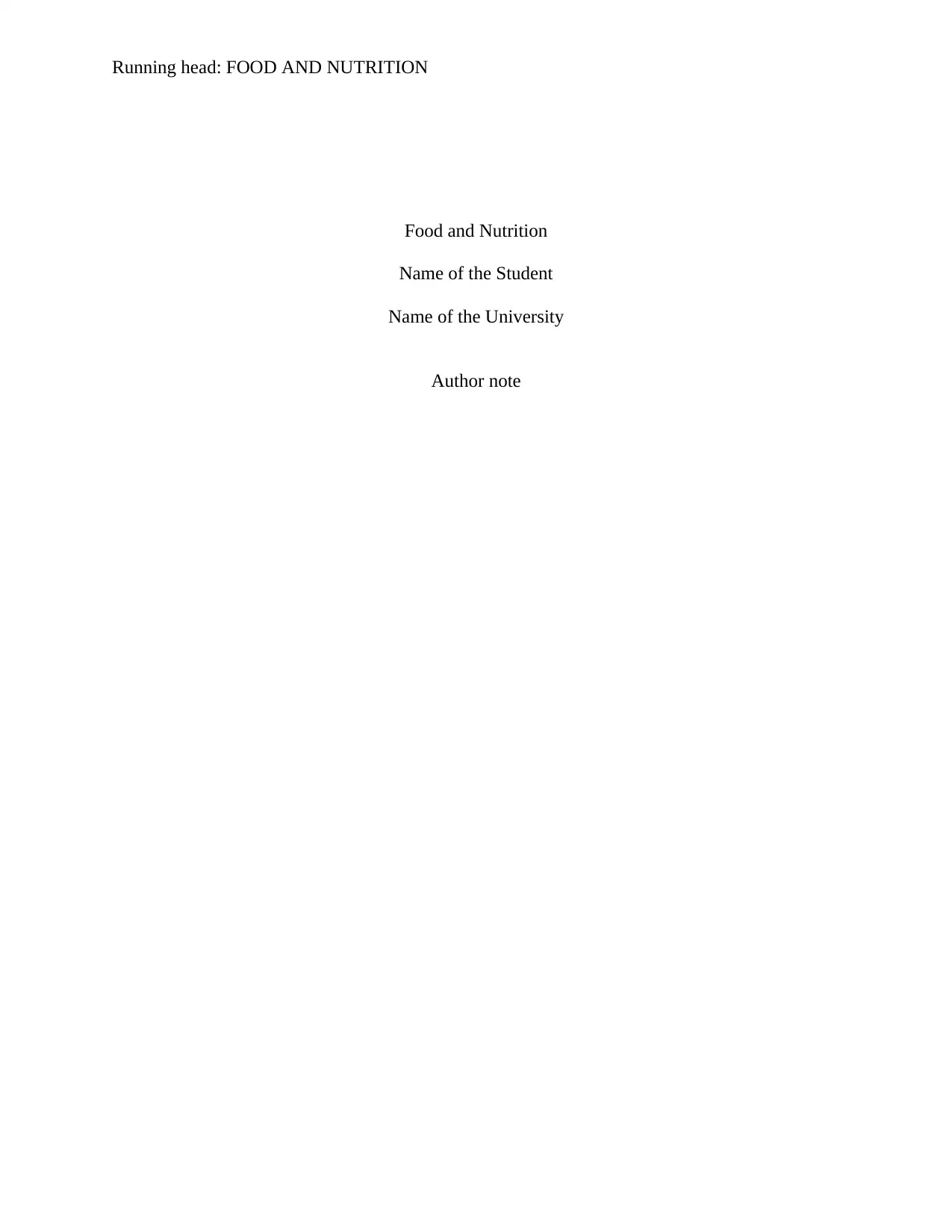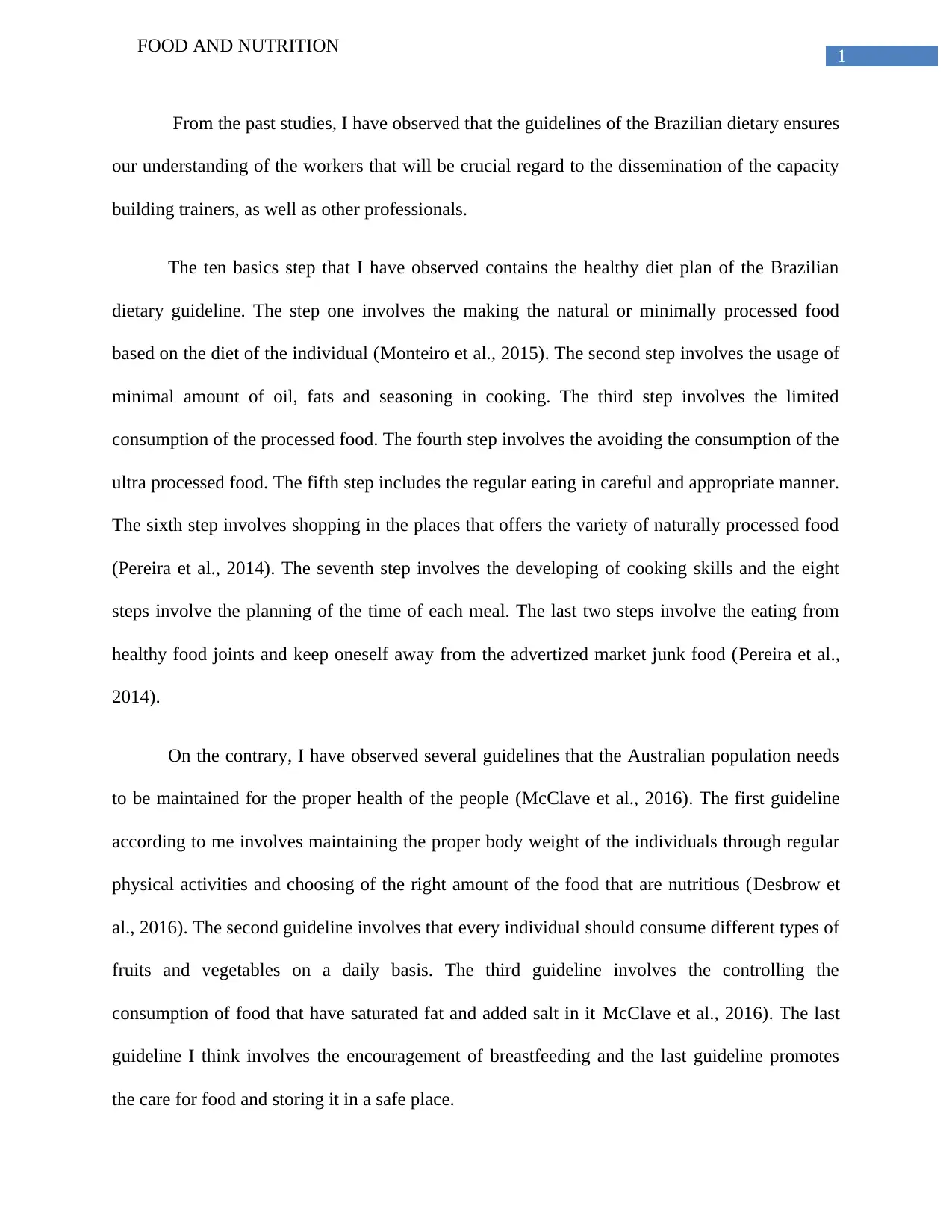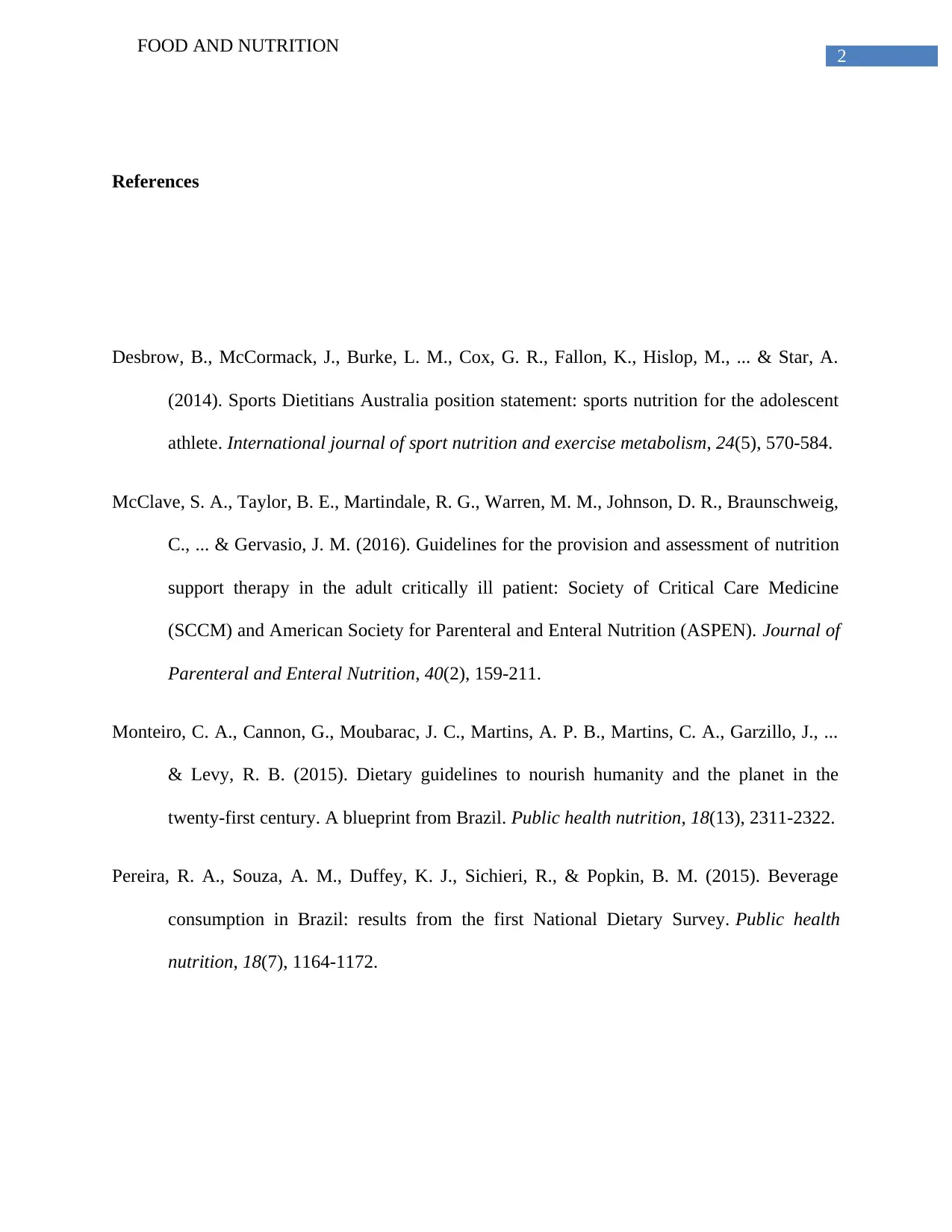Food and Nutrition Report: Comparing Dietary Guidelines of Two Nations
VerifiedAdded on 2020/03/04
|3
|664
|43
Report
AI Summary
This report provides an analysis of food and nutrition, specifically focusing on the dietary guidelines of Brazil and Australia. It begins by outlining the ten basic steps of the Brazilian dietary guidelines, which emphasize the consumption of natural or minimally processed foods, minimal use of oils and seasonings, and avoidance of ultra-processed foods. The report then contrasts these guidelines with those recommended for the Australian population, which include maintaining a healthy body weight through regular physical activity and appropriate food choices, consuming a variety of fruits and vegetables daily, limiting the intake of saturated fats and added salt, encouraging breastfeeding, and practicing safe food storage. The report utilizes several research papers to support its findings, offering a comparative view of dietary approaches for promoting health and well-being in different cultural contexts.
1 out of 3










![[object Object]](/_next/static/media/star-bottom.7253800d.svg)